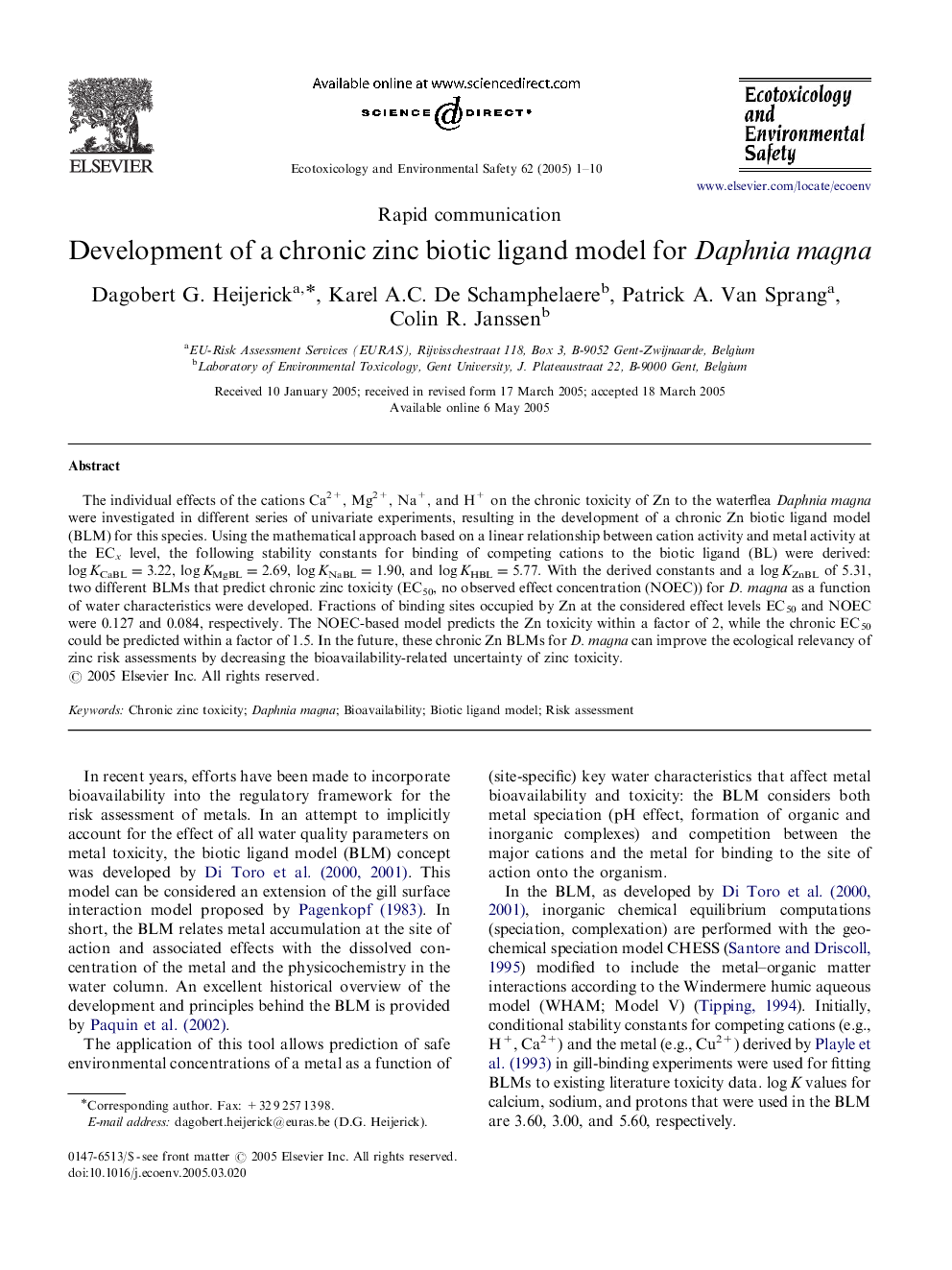| Article ID | Journal | Published Year | Pages | File Type |
|---|---|---|---|---|
| 9454785 | Ecotoxicology and Environmental Safety | 2005 | 10 Pages |
Abstract
The individual effects of the cations Ca2+, Mg2+, Na+, and H+ on the chronic toxicity of Zn to the waterflea Daphnia magna were investigated in different series of univariate experiments, resulting in the development of a chronic Zn biotic ligand model (BLM) for this species. Using the mathematical approach based on a linear relationship between cation activity and metal activity at the ECx level, the following stability constants for binding of competing cations to the biotic ligand (BL) were derived: log KCaBL=3.22, log KMgBL=2.69, log KNaBL=1.90, and log KHBL=5.77. With the derived constants and a log KZnBL of 5.31, two different BLMs that predict chronic zinc toxicity (EC50, no observed effect concentration (NOEC)) for D. magna as a function of water characteristics were developed. Fractions of binding sites occupied by Zn at the considered effect levels EC50 and NOEC were 0.127 and 0.084, respectively. The NOEC-based model predicts the Zn toxicity within a factor of 2, while the chronic EC50 could be predicted within a factor of 1.5. In the future, these chronic Zn BLMs for D. magna can improve the ecological relevancy of zinc risk assessments by decreasing the bioavailability-related uncertainty of zinc toxicity.
Related Topics
Life Sciences
Environmental Science
Environmental Chemistry
Authors
Dagobert G. Heijerick, Karel A.C. De Schamphelaere, Patrick A. Van Sprang, Colin R. Janssen,
